Tibet is often referred to as the “Roof of the World,” a place where the earth meets the sky, and the spirit of ancient traditions thrives. For centuries, Tibet has been a sanctuary for those seeking spiritual solace, enlightenment, and connection with nature. The region’s stunning landscapes, dotted with sacred lakes, towering mountains, and majestic monasteries, create an ethereal setting for spiritual exploration. And while Tibet attracts thousands of pilgrims and tourists each year, winter offers a unique, peaceful, and introspective experience for those looking to embark on a spiritual journey.
A spiritual tour of Tibet in winter is not merely a trip; it is an invitation to connect with the region’s deep Buddhist roots, embrace its profound serenity, and find a sense of peace amidst its awe-inspiring landscapes. During the colder months, Tibet’s sacred sites, once crowded with tourists in the warmer seasons, are tranquil and less frequented, offering a more intimate and reflective atmosphere for spiritual seekers. Whether you’re visiting ancient monasteries, meditating by sacred lakes, or walking the same paths as thousands of Tibetan pilgrims, Tibet in winter provides a profound opportunity to connect with yourself and the land in a way that few other places on earth can.
In this blog post, we’ll explore the spiritual journey through Tibet in winter. From revered monasteries to holy mountains and lakes, here’s everything you need to know about experiencing Tibet’s spiritual magic during this peaceful season.

Why Winter is the Perfect Time for a Spiritual Tour in Tibet
While Tibet is a magical destination year-round, winter adds a layer of tranquility and spiritual depth to your journey. Here are a few reasons why winter is an ideal time for a spiritual tour:
1. Peace: Tibet’s high season typically runs from May to October when the weather is warmer, and most tourists flock to the region. In winter, the number of visitors drastically decreases, and sacred sites like the Potala Palace and Jokhang Temple become quieter, allowing for more introspective experiences without the distractions of large crowds.
2. Spiritual Atmosphere: Tibet is inherently spiritual, and in winter, there is an even stronger sense of peace. The Tibetan people celebrate their New Year (Losar) during the winter months, filling the air with rituals, prayers, and festivals that deepen the connection to Tibetan culture and religion.
3. Stunning Landscapes: Winter transforms Tibet into a winter wonderland, with snow-covered mountains, frozen lakes, and a crisp, clear atmosphere that enhances the beauty of the region. This stunning landscape can heighten the spiritual experience, making you feel connected to the land, the sky, and everything in between.
4. Fewer Tourists: Winter in Tibet is off-season, meaning you’ll find fewer tourists, allowing you to explore Tibetan monasteries, temples, and sacred sites in a more personal and profound way. This solitude is ideal for deep meditation, reflection, and spiritual contemplation.
Spiritual Highlights of Tibet in Winter
Now, let’s dive into some of the most spiritually enriching places to visit in Tibet during the winter months.
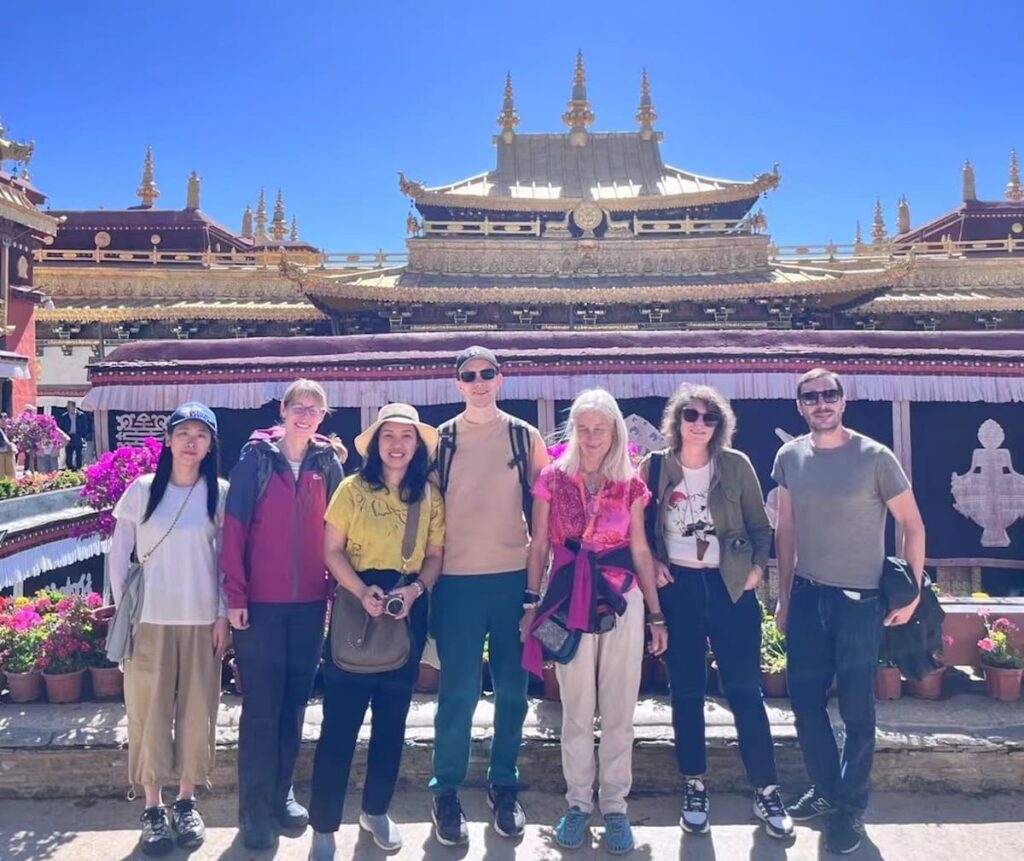
1. Lhasa: The Spiritual Heart of Tibet
The city of Lhasa, the capital of Tibet, is the spiritual and cultural heart of the region. It is a pilgrimage destination for millions of Tibetans and Buddhists around the world. Winter is a great time to visit Lhasa’s iconic religious sites, as the city is quieter, and the cold air adds a sense of serenity to the surroundings.
Key Spiritual Sites in Lhasa:
• Potala Palace: As the former winter residence of the Dalai Lama, the Potala Palace is a symbol of Tibetan Buddhism and the center of spiritual life. Visiting the palace in winter offers an opportunity to explore its many rooms, chapels, and prayer halls without the crowds. The peaceful winter atmosphere enhances the palace’s sacred aura, making it an ideal place to reflect on Tibetan Buddhist teachings and history.
• Jokhang Temple: Considered the holiest temple in Tibet, Jokhang is the spiritual heart of Lhasa. Pilgrims from all corners of Tibet come to perform prostrations and walk around the temple in reverence. The winter months, especially around the Losar Festival (Tibetan New Year), bring a spiritual energy to the temple as monks and pilgrims engage in prayer, chanting, and ceremonies. If you’re seeking to deepen your spiritual practice, Jokhang Temple offers a serene space to meditate or simply observe the devotion of others.
• Barkhor Street: Surrounding Jokhang Temple, Barkhor Street is a vibrant hub for Tibetans to shop for religious artifacts, prayer beads, and other spiritual items. During the winter months, the street is less crowded, making it an ideal place to quietly walk, engage with the locals, or purchase religious items to bring home as mementos of your journey.
• Sera and Drepung Monasteries: Just outside Lhasa, you’ll find the famous Sera Monastery and Drepung Monastery. These two monasteries are among the largest in Tibet and are home to hundreds of monks who practice Tibetan Buddhism. Sera is known for its traditional debate sessions, where monks engage in lively discussions about Buddhist philosophy. In winter, these monasteries are peaceful, allowing you to observe monastic life and participate in meditative practices.
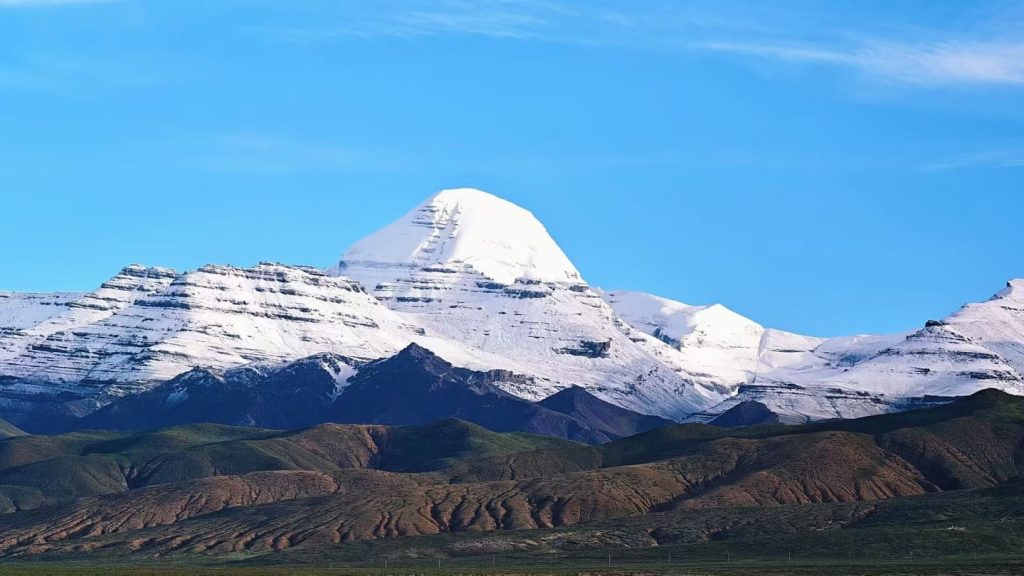
2. Mount Kailash: The Sacred Peak
For many, a spiritual tour of Tibet is incomplete without a visit to Mount Kailash. Revered by Hindus, Buddhists, Jains, and Bonpo practitioners, Kailash is considered the most sacred mountain in the world. Located in the remote western part of Tibet, Mount Kailash is believed to be the abode of Lord Shiva in Hinduism, and it is said that circumambulating the mountain on foot—known as the Kora—can wash away a lifetime of sins.
Winter is a more challenging time to visit Kailash due to the cold temperatures and snow, but the solitude of the winter months makes it even more spiritually powerful. The stark, snow-covered landscape around Kailash offers a serene and reflective atmosphere for those willing to brave the winter conditions. For the devout, a winter pilgrimage to Mount Kailash can be a life-changing spiritual journey.
3. Lake Manasarovar: A Sacred Retreat
Located near Mount Kailash, Lake Manasarovar is another important spiritual site for pilgrims. In Tibetan Buddhism, it is believed that bathing in the lake’s holy waters purifies the soul and brings spiritual enlightenment. While visiting in the winter can be cold, the frozen beauty of the lake adds a mystical quality to the experience.
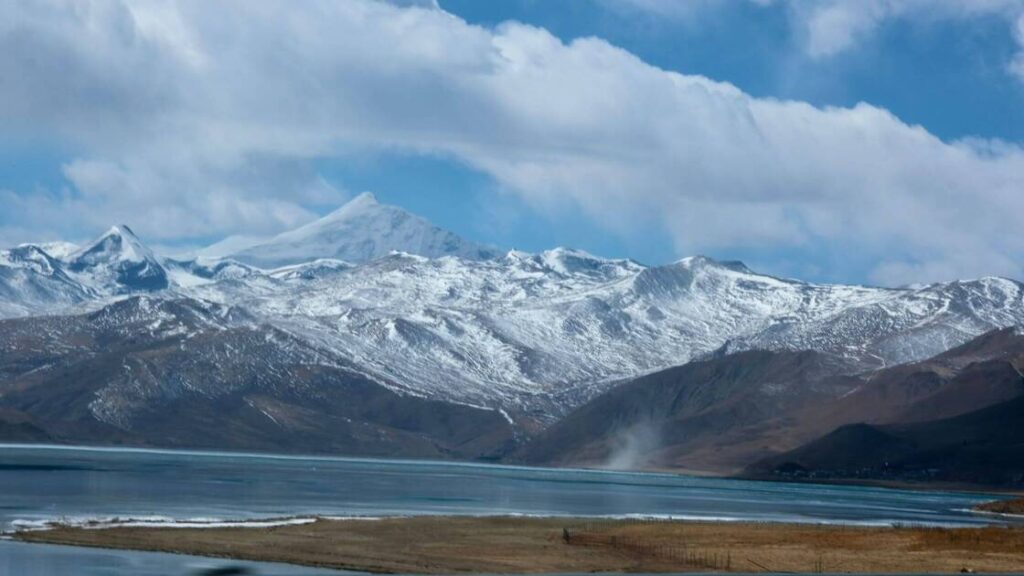
The serene, reflective environment around Lake Manasarovar makes it an ideal location for meditation and prayer. Pilgrims often spend time walking around the lake, practicing their mantras, or simply soaking in the quiet beauty of the landscape. Winter’s stillness adds an extra layer of introspection and spiritual peace to the lake’s already profound significance.
4. Namtso Lake: The Frozen Mirror
Another of Tibet’s sacred lakes, Namtso, is known for its stunning beauty. Located about 250 kilometers from Lhasa, this high-altitude lake is surrounded by snow-capped mountains. In winter, Namtso freezes over, creating a surreal landscape that feels otherworldly.
The frozen surface of Namtso, along with its crisp, clear air, makes it a perfect location for deep meditation and spiritual reflection. The lake has long been a site of pilgrimage, and winter provides a peaceful, tranquil setting for those seeking solitude and connection to the divine. The spiritual atmosphere at Namtso is enhanced by the presence of local Tibetan pilgrims who come to the lake to engage in prayers and religious ceremonies.
5. Tashilhunpo Monastery: The Seat of the Panchen Lama
Located in Shigatse, the second-largest city in Tibet, Tashilhunpo Monastery is one of the most important religious centers in Tibet. Founded in 1447, it is the seat of the Panchen Lama, the second-highest figure in Tibetan Buddhism after the Dalai Lama. The monastery is a place of deep spiritual significance and is home to a large community of monks.
Visiting Tashilhunpo in winter is a quiet and contemplative experience, offering a chance to witness monastic life in its most peaceful state. You can explore the monastery’s temples, listen to monks chant, and engage in meditative practices, all while surrounded by the majestic Himalayan peaks.
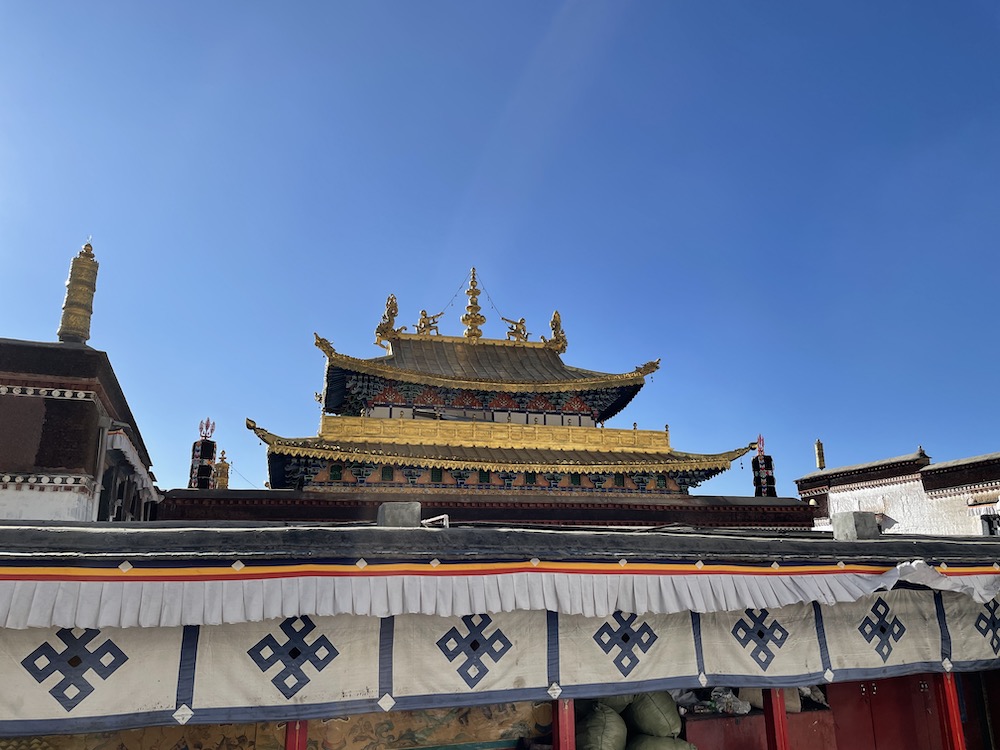
6. Chorten and Stupas: Tibetan Spiritual Architecture
Tibet is home to countless chortens (stupas), small shrines that represent the Buddha’s teachings. Many of these can be found in and around monasteries, along pilgrimage routes, and in remote villages. The most famous of these is the Tashi Lhunpo Chorten in Shigatse, but you’ll find stupas scattered across the landscape of Tibet.
In winter, these spiritual structures take on an even more powerful energy, with the snow and cold creating a sense of stillness and reverence. Walking around these stupas, performing prostrations, and offering prayers provides a deep sense of connection to Tibetan Buddhism and its teachings.
7. Losar: The Tibetan New Year Festival
If your visit coincides with Losar, the Tibetan New Year festival, you’ll experience a celebration of Tibetan culture and religion like no other. Losar is marked by special prayers, dances, and rituals that celebrate the New Year and ask for blessings for the year ahead.
The festival is an excellent opportunity to witness Tibet’s vibrant spiritual practices in full force. The celebrations are accompanied by music, dancing, and offerings, all of which contribute to the region’s rich cultural and religious atmosphere.
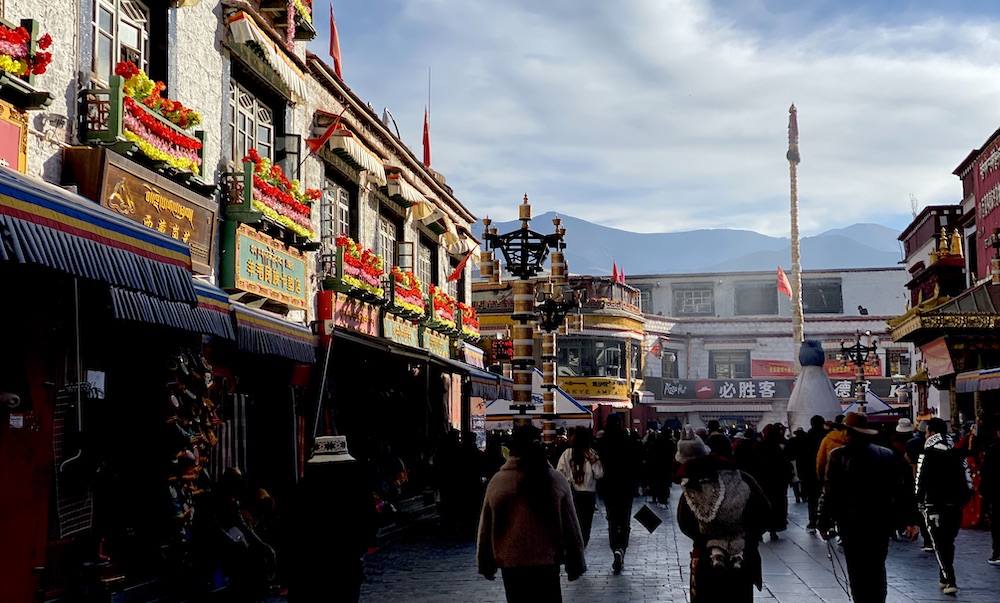
Conclusion: A Spiritual Journey Like No Other
A spiritual tour of Tibet in winter offers a unique chance to connect with the region’s deep spiritual roots, immerse yourself in its serene landscapes, and experience the peaceful atmosphere of the sacred sites without the distractions of the peak tourist season. Whether you are meditating beside the frozen waters of Namtso Lake, praying in the temples of Lhasa, or embarking on a pilgrimage around Mount Kailash, Tibet in winter presents an unparalleled opportunity to explore your inner self and seek spiritual enlightenment in one of the most awe-inspiring places on Earth.
If you are looking for a transformative experience that blends nature, culture, and spirituality, a winter journey to Tibet is an adventure that will stay with you long after you return home. Let the spirit of the Roof of the World guide you to a deeper understanding of yourself and the world around you.
